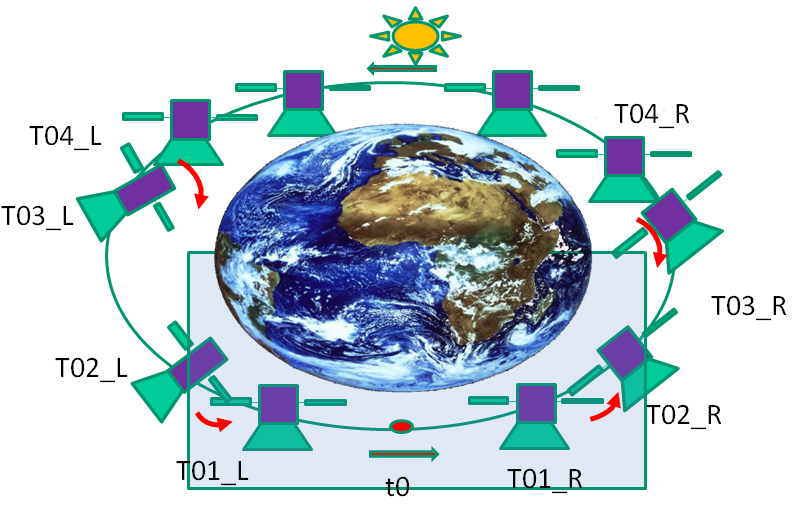Observing strategy
The EP satellite is a 3-axis stabilized, inertial-pointed platform to explore all-sky transient X-ray sources and constantly various X-ray sources. In the all-sky survey mode the satellite observes the night-side sky and makes a coverage of the half sky in every 3 orbits. In the day-side orbit the satellite acquires power energy with the solar illumination. In the night-side orbit, the satellite observes different regions of the night-side sky by in-orbit manoeuvring. At both of the west and east side of the earth, the satellite manoeuvres 60 degree west or east off the solar-earth line respectively, as shown in Figure 1. In the sequence of every 3 orbits, the orientation of the satellite is set to 60 degree upper off the earth equator plane, parallel to the earth equator plane and 60 degree down off the earth equator plane, as shown in Figure 2.

Figure 1 Illustration of the step-and-stare survey strategy for the EP/WXT in one orbit. There are 3 pointings with ~20min exposure each and only the night-sky is monitored. During part of the orbital day time no observations are made. All-sky patrolling observation

Figure 2 Directions of WXT pointings in three successive orbits in the normal survey mode. In such a way the whole night sky is covered in 3 orbits. With the motion of the Sun on the sky the whole sky can be covered in half a year time.